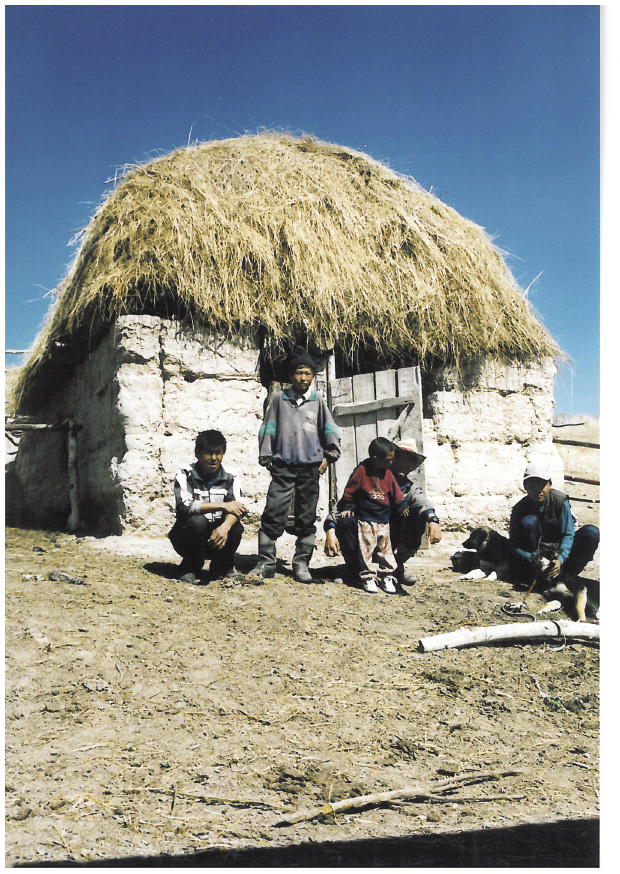- 1. Twin-bar tunes (ex.1-11, №1-58)
- Twin-bar tunes based on the g,-c bichord
- Twin-bar tunes based on rotating motifs
- Twin-bar tunes with descending/hill-shaped lines
- Motifs with a downward leap at the end of the line
- Motivic processes
- 2. Tunes moving on Ionian scales (ex.12-24, №59-164))
- Laments and their relatives
- Two-lined tunes of Major character with higher main cadences and their four-lined relatives
- Four-lined tunes of Major character
- 3. Aeolian tunes (ex.25-36, №165-238)
- Laments and related tunes
- Aeolian tunes with higher main cadence
- Four-lined tunes of Minor character
- Valley-shaped, ascending or undulating first line
- 4. Caramazan religious tunes (ex.37-41, №239-326)
- 5. Tunes of domed structure (ex.42-43, №327-332)
Hungarian researchers around the Tien-Shan
Hungarian scholars have long been searching for the eastern relations of the Hungarian people and culture. Several of them, including Ármin Vámbéry, György Almásy and Gyula Prinz also visited areas in today’s Kyrgyzstan.
Ármin Vámbéry (1832-1913) went on a Central Asian expedition on assignment from the Hungarian Academy of Sciences. Though his linguistic findings are outdated, his ethnographic observations are still relevant. (Vámbéry 1885)
In scientific terms the journeys of György Almásy (1867-1933) were the most gainful. He went on a nine-month expedition in 1900 and recorded accurate data of the flora and fauna of the Tarim Basin, Narin Valley, Tekes Basin and the Issyk-kul area, also putting down data on the main phenomena of the mode of living. He outlined a correct image of livestock breeding, agriculture, trade, costumes as well as ethnic relations in the early 20th century. Almásy mainly toured Kyrgyzstan, most of his escorts also being Kyrgyz. Of outstanding import is his collection of text folklore and the recording of details of the Manas epic, which he was the first to publish in Europe. (Almásy 1901, 1903 and 1904) In 1906 he returned to the Tien-Shan with Gyula Prinz and Herbert Archer, and then went on to China.
As a member of the Almásy expedition in 1906, Gyula Prinz (1882-1973) made geological and geographic observations that had been overlooked by the Russian cartographers. His descriptions of the nomads’ way of life, costumes, burial customs are invaluable, illustrated by his excellent sketches. (Prinz 1945:311) In April 1909 he returned to Inner Asia, arriving in Andijan via Baku, Krasnovodsk, Tashkent, then crossing the Fergana range through the Kalmak pass, he mainly traversed the Tarim Basin. (Kubassek 1993)
The lengthy break in Hungarian expeditions in Central Asia that followed was terminated by István Mándoky Kongur born in the Kunság area of Hungary allegedly of Cuman descent (1944-1992). He searched there for analogies of the Cuman language surviving in Hungary. (Mándoky 1993) Mándoky focussed on elements of Cuman culture, realizing that in addition to a study of Turkic linguistic records the greatest resource is a knowledge of the living Cuman-Kipchak dialects
And now, as the representative of ethnomusicology I am here to conduct comparative research on Kyrgyz folk music.

